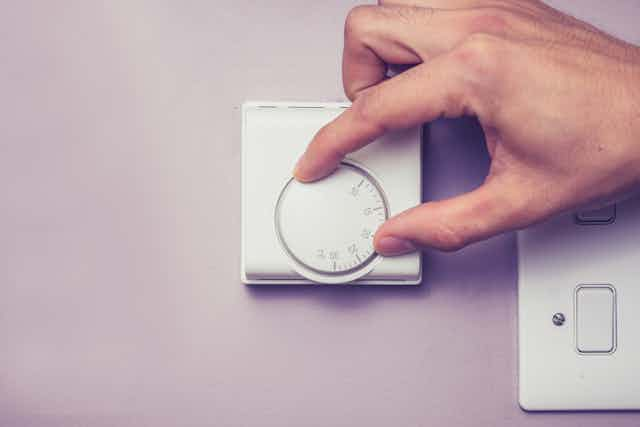As summer becomes a distant memory, evenings sitting in the garden are replaced with curling up in front of the TV with the heating on … or off. Personal preference varies and but there is often said to be a big gender divide when it comes to feeling the cold. But why would men and women have such different temperature comfort ranges?
The biggest factor in all of this is the skin. The skin is the largest organ in the body and performs many functions. It is a protective barrier against pathogens and ultraviolet radiation from the sun, a restrictive barrier to retain water, it helps synthesise vitamin D from sunlight to strengthen our bones, and it regulates internal body temperature. It is also the primary detector of external temperature.
The skin is made up of three distinct layers : the outermost epidermis, the dermis in the middle and the hypodermis. The hypodermis is the deepest layer (think hypodermic needle for injections) and is also known as the subcutaneous fat layer. It’s insulating and designed to keep us warm. If you go through all these layers you usually reach muscle.

While skin cells are important there are also free nerve endings that detect temperatures and relay this information to the brain. These cells sit right next to where the outermost layer of the skin meets the next layer.
Is all skin the same?
There are many differences in skin – colour is perhaps being the most visible. Less visible is skin thickness. The dermis and epidermis is thickest on the buttocks and thinnest on places such as the thighs and middle of the back. However, the thickness of the deepest subcutaneous fat layer also differs. It is thickest on the buttocks, and thinnest on the arms and thighs. Skin thickness also varies with gender. Women’s subcutaneous fat layer is almost twice as thick as that in men; men carry most of their fat in their abdomen around their organs, women subcutaneously beneath their skin.
But fat is said to be an insulator, so why is there such difference in comfortable temperature? Well the body’s natural reaction to cold temperatures is to shiver, this is where your muscles contract involuntarily or shake to generate heat and it’s controlled by nerves. It is well documented that men have a higher amount of muscle with which to generate heat in cold temperatures, but also ability to generate heat while resting. Men also have a higher basal metabolic rate – energy expended at rest. These two factors give them a higher resting temperature.
If you consider the basic distribution of subcutaneous fat, the female body should maintain warmth better than the male, but this doesn’t seem to be the case. When you take into consideration skin thickness, subcutaneous fat thickness and muscle mass, it becomes clear that although female muscles shiver the same as those in the male, their thicker insulating layer potentially means that the heat they generated takes longer to get through to the outer layers of the skin where the temperature-sensing free nerve endings are located.
Hormones also play a large part in determining comfortable temperature and they cause a more dynamic change in thermoregulation in females than males due to the menstrual cycle. There are also clear differences between amounts of body fat in females depending on ethnic origin. Geographical location can have a huge impact on the need for thick layers of subcutaneous fat to maintain temperature. Some individuals of the Inuit population in Greenland, for example, have 34% body fat to maintain temperature in temperatures that range from -8 to 7°C during the year.
So all of these factors may account for why some women and men say they feel the cold differently. Of course many of these differences can also differ between individuals.
Still cold?
Spare a thought for newborns who cannot shiver to keep warm. Their nervous system isn’t developed enough at birth to regulate temperature. However, to compensate for this, they have an abundance of a different type of fat. This brown fat is located around key organs such as the heart and kidneys as well as along the spine to ensure the core remains warm. This fat is thermogenic and creates heat, but, as we age, we lose this fat and it is replaced by white fat (actually yellow in colour) which insulates and acts as an energy store.
So as the nights draw in and the temperature drops, remember there are specific differences in the way our bodies are constructed that mean we feel and respond to changing temperatures differently.


